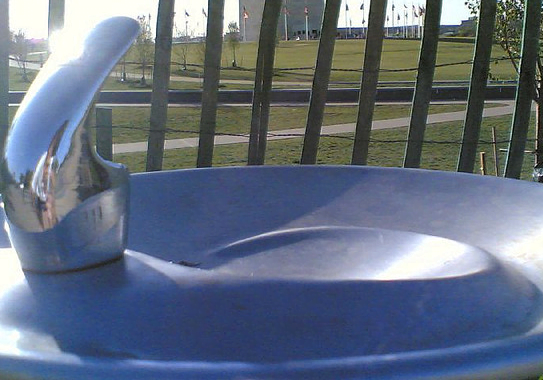Last week’s announcement from UNICEF that we have met the Millennium Development Goal for drinking water has been met with fears that the world may think the water problem has been solved. Rose George, author of The Big Necessity, explained the problem is conflating goals and targets:
“It is simply wrong to say that the MDG on clean water has been met, because there isn’t one. There is an MDG that includes clean water. It gives a misleading impression and if it encourages anyone to think, ok then, no need to battle any more, then it is downright dangerous.”
Widespread misunderstandings surround Millennium Development Goal #7, its sub-targets, and the role they play in reducing child mortality.
All MDGs are not alike. While some are fairly straight forward—MDG 4 aims to reduce 0-5 child mortality by two-thirds and nothing else—MDG 7 always felt like a bit of a catch-all, looping together ecological sustainability, including conservation (7a) and biodiversity loss as measured by seven sub-sub-targets (7b), with improving the lives of slum dwellers (7d) and halving the number of people in the world without access to safe water and sanitation (7c).
This week’s achievement was that one half of the objective for MDG 7’s sub-target c, achieving 86% access to improved drinking water, has been not only been met, but exceeded.
The idea of making water safe for the poorest regions of the planet has tremendous promise. Not the least of which is saving 5 million children’s lives lost each year and reducing the incidence of chronic health problems like stunting and loss of intelligence, both byproducts of severe and repeated early childhood diarrheal episodes.
The fear is that if the world considers the water target met, policy leaders and governments may overlook the fact that this unprecedented increase in access to “safe water” has not come alongside a precipitous drop in diarrheal disease. While cases of 0-5 diarrheal disease resulting in death have decreased due to improvements in treatment, overall incidence is unchanged. The increase in access to water has not had its intended effect of making fewer children acquire a diarrheal infection.
When it comes to water, more and closer sources do not necessarily mean safe. Although presumably safer than surface water, improved water sources are still vulnerable to contamination:
While piped water systems performed relatively well with 89% in compliance with the guideline (less than one colony-forming unit of thermotolerant coliforms per 100 milliliters), other sources that are considered improved did much worse:
Boreholes and tubewells – 69% compliant
Protected springs – 63% compliant
Protected dug wells – 43% compliant (less than half!)
In the majority of low- and middle-income countries, the responsibility for monitoring water supplies for contamination is decentralized to local governments, yet, these towns and districts do not have revenue streams necessary for supporting a monitoring infrastructure. In its 2010 report on MDG 7 progress, the Joint Monitoring Committee acknowledged that monitoring remains the biggest hurdle in the effort to achieve safe water:
In the future, water quality will need to be considered when setting targets for access to safe water. Despite efforts to compile global water quality data, measuring the safety of water can be difficult; in developing regions, it has been attempted so far only in pilot surveys. Rapid, reliable and cost-effective ways of measuring water quality locally and reporting findings at the global level will need to be identified to overcome the current technical and logistic constraints, along with the high cost.
Images from WassInfo


